You want your kids outside experiencing nature just like you did as a kid. I’m the same way.
Visiting National Parks is one of the best ways to give kids a good dose of the outdoors, and while it’s not as expensive as Disneyland, it’s also not free. Today, every park has their own “fee schedule,” admission typically costs between $5 and $35 per vehicle.
Want to stretch your vacation dollars as far as they’ll go in the National Parks? Here’s what you need to know:
1. Plan your visit on one of the 6 Free Park days.

Six days a year, you can get into any National Park for free. Fair warning: It’ll be crowded on these days! Here are the 2024 dates:
January 15: Birthday of Martin Luther King, Jr.
April 20: First day of National Park Week
June 19: Juneteenth National Independence Day
August 4: Anniversary of the Great American Outdoors Act
September 28: National Public Lands Day
November 11: Veterans Day
Look for activities during free admission days. During National Park Week, which includes the upcoming Free Park Day on April 20, you'll find several Theme Days, including:
Saturday, April 20, Discovery: Free entrance
Sunday, April 21, Volunteers: Take time to volunteer at your national parks.
Monday, April 22, Earth Day: Participate in volunteer events.
Tuesday, April 23, Innovation: Learn about innovative projects in our national parks.
Wednesday, April 24, Workforce Wednesday: Meet national park employees, interns, fellows, volunteer and more.
Thursday, April 25, Youth Engagement: Learn about opportunities for youth and young adults.
Friday, April 26, Community Connections: Learn about what the national park programs and partners are doing in communites and parks.
Saturday, April 27, Junior Ranger Day: Here's your chance to earn a Junior Ranger badge with in-person and online activities.
Sunday, April 28, Arts in Parks: Create art with your own supplies or pick up some free-to-use supplies from the visitor center.
2. Fourth graders get free admission to all National Parks for the whole family.
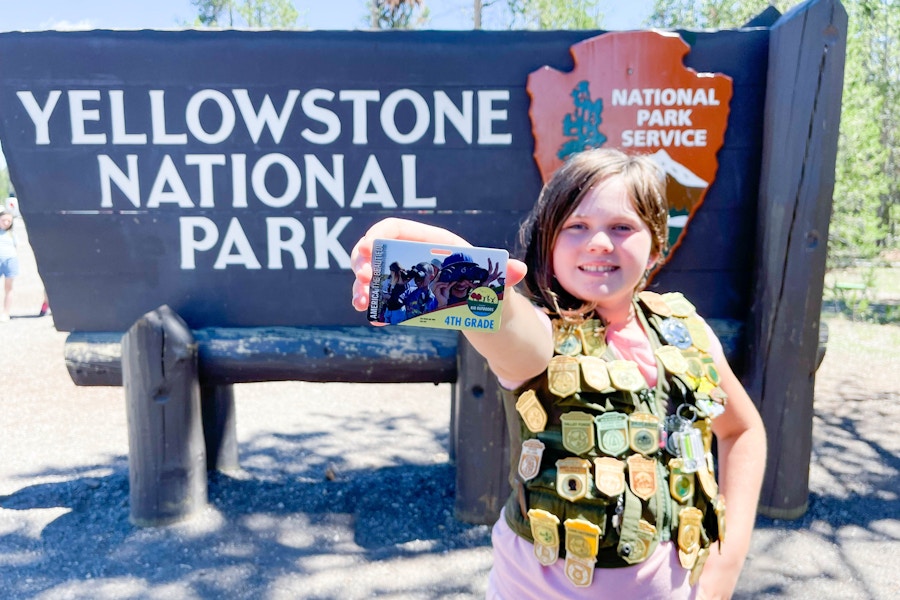
If you have a fourth grader, your whole family (or anyone in the fourth grader’s vehicle) gets into any park for free. The fourth grader pass is valid the summer before and the summer after fourth grade.
You’ll need to print the Every Kid Outdoors paper pass and then exchange it at your park for an Annual 4th grade pass. The paper itself is just the first step — not the actual pass. The pass will cover entrance or day-use fees but not camping, parking, or other expenses.
3. Bring Grandpa or Grandma along and get into any park for $80 — plus, discounts on camping.
Seniors (age 62+) qualify for either the $20 Annual Senior Pass or the $80 Lifetime Senior Pass.
So if you’re planning a trip to a National Park and Grandma has a pass, bring her along. The vehicle she’s riding in gets into the park for free, and at some sites, Senior passes get access to discounted camping.
But your real reason should be to make memories with Grandma, clearly.
4. Children under 16 are always free.
Period. This comes in handy for parks that charge a per-person entrance fee instead of a per-vehicle entrance fee. If a child 15 or younger is in a vehicle visiting a park that charges by vehicle, the flat-vehicle rate still applies.
5. Active-duty, retired and reserve military are free.
Current U.S. military members and their dependents get free admission to parks.
6. Become a volunteer and visit any park for free once you clock 250 service hours.
Okay, I get that 250 hours sounds like a lot. But you don’t have to serve that many hours in one year. You can spend two or three years earning your hours. You can do your hours at any of the six land management agencies (below). Check out volunteer opportunities.
Once you hit 250 hours, you’ll receive a Volunteer Pass, good for free admission to any National Park for your whole family for one year.
TIP: There are also part-time and full-time volunteer positions in every park. Depending on how many hours you serve, lodging may be free.
7. Buy an annual pass for $80 if you’re visiting a National Park more than three times in a year.
Most park entrance fees hover around $25 per vehicle or $15 per person, depending on how the park charges. You’ll save money if you plan to visit a National Park over three separate times in a year. (Can be any National Park, grassland, or forest along with BLM lands.)
Note that most passes cover about seven days’ worth of admission, so you don’t need to buy an annual pass if you’re simply staying outside the park and returning every day to visit. You’d just pay one entrance fee.
8. Visit popular parks like the Grand Canyon, Yosemite and Yellowstone during spring or fall (low seasons).
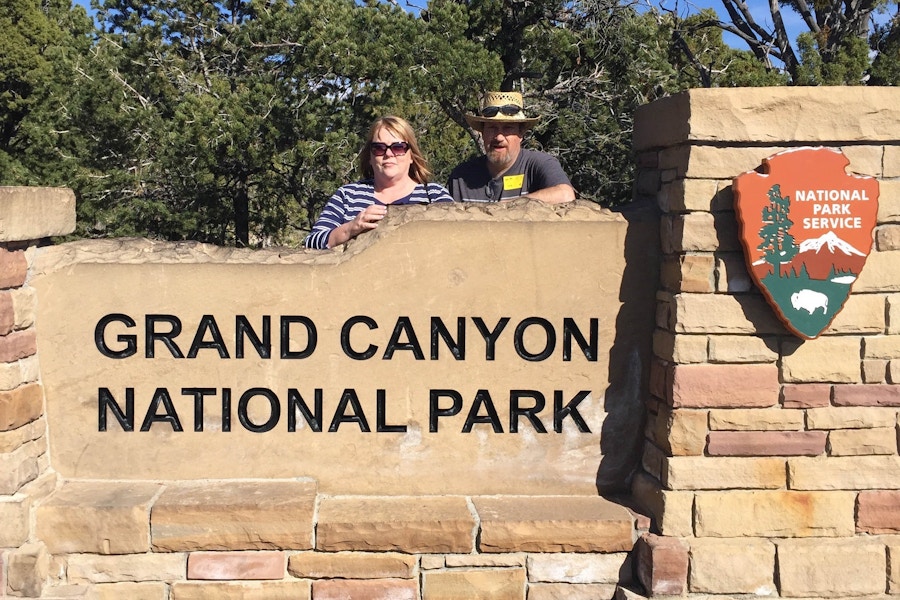
It may seem obvious, but if you can visit the national parks with the most foot traffic in the low seasons, when other families aren’t vacationing, you’ll probably see a whole lot more of the park. Just make sure the park is actually open (and not blocked with snow) if you want to visit in the spring.
9. Visit less popular parks like Great Basin, Redwoods, North Cascades during the summer (high season).
There are some killer parks that just aren’t visited as often as others. Truthfully, the least frequented parks are in Alaska, and if you can get up there, you should. It’s pure wilderness.
But there are many parks in California, Washington, Texas and even in the midwest and south that have a fraction of the visitors as Glacier or Yosemite. You can look up annual foot traffic online to get a sense of how busy the park you’ve got your eye on is.
10. Book your stay at a park lodge one year in advance — spots fill fast.
If you want to stay at one of the iconic park lodges, book earlier than it seems like you should need to!
Popular lodges like Yellowstone’s Old Faithful Inn or Yosemite’s Ahwahnee fill up the quickest. National park lodges haven’t been expanded or received many additions over decades, and as the population has increased, it’s created high demand.
If you don’t care about lodging inside the park, there are other tricks. . .
11. Camp inside the park if you’re planning a last-minute trip.
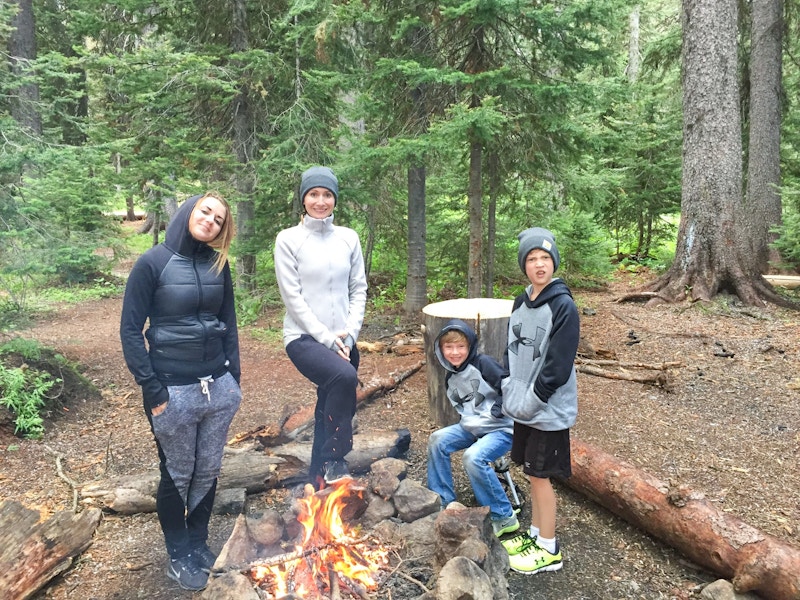
Most parks that allow camping have both reservable and first-come, first-served sites. Nightly fees range from $17-$60 depending on your site and whether you need an RV hookup.
If you’re so last minute that you can’t get a reservable spot, there are always a limited amount of first-come, first-served spots.
12. Or camp on BLM or National Forest land outside the park for free.
Some people call it primitive, I call it natural.
You can get a wilderness camping experience for totally free if you can handle a little dirt and sweat. There are no amenities if you camp this way, but you won’t have to listen to other campers blasting music or singing karaoke songs until 11pm (true stories).
Double check the area you’re considering pitching a tent on to make sure fires are acceptable (bring a camp stove if not), and to make sure you’re legal. You may have to get a permit or you may not. Just double-check.
13. Not a camper? Stay in a hotel a few miles away from the park entrance to save on lodging.
If you don’t want to camp and you’re only 3-6 months away from your National Park trip, try to find a hotel right outside the park entrance. Hotels closest to the entrance will fill up the quickest, but not as fast as in-park lodges.
Related: 9 (Free!) Hotel Loyalty Programs You Should Sign Up for
14. Rent an RV for $1 and make a road trip out of it.
There are a lot of RV rental companies that allow you one-way travel for $1. One of the best is imoova.com. You have to choose from a list of pickup and destination cities, but if you can arrange it, you’ll only pay $1 per day to use the RV. Most places also have limits on how long you can have the rental (usually between two and nine days).
Find out more about how to rent an RV for $1.
15. Download the National Parks app.
The official National Parks apps covers all of the National Parks. App features include:
Interactive maps, including points of interest, trails and more for each park
Locate amenities such as restrooms, food, shopping and more
Create and share virtual postcards (with scenes from the park) with family and friends
Get news and alerts about all parks or select parks you choose
16. Kids can earn Junior Ranger badges in National Parks and online.

Yep, nearly every park has a Junior Ranger program. Some programs let you participate in virtual activites and email in proof you've completed them to get a Junior Ranger badge or equivalent award.












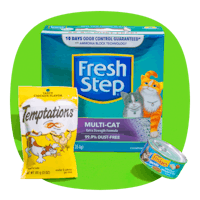







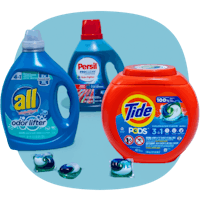











Tell us what you think